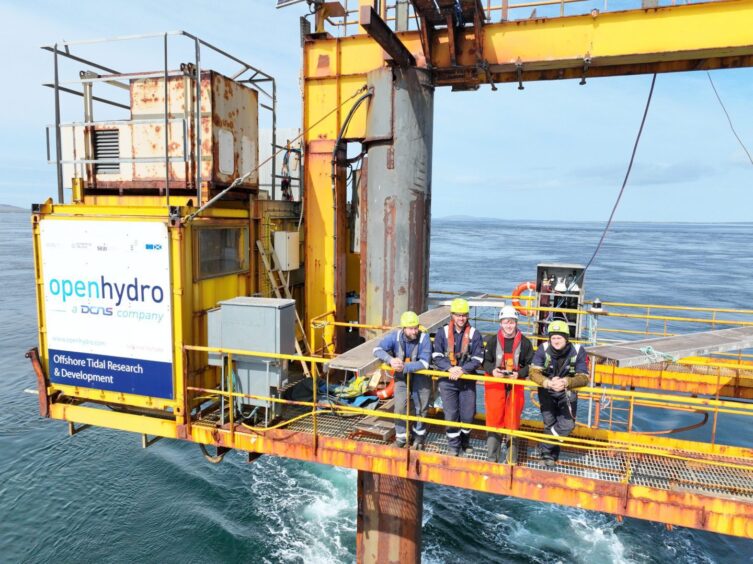
Ocean Kinetics and Green Marine UK have entered into a joint venture agreement to begin decommissioning a tidal energy platform located in the Orkney Islands.
The platform – owned by OpenHydro – was constructed in 2006 at the Fall of Warness test site and consists of a steel superstructure functioning as a working area supported by two steel piles drilled and grouted into the seabed.
The turbine element of the project was connected to these piles which allowed it to be raised and lowered with two 15-tonne hydraulic winches.
The platform was used by OpenHydro to refine its tidal turbine technology, becoming Scotland’s first tidal turbine to be connected to the grid, as well as the first such project to generate electricity to the national grid in the UK.
Now shut down, the task to decommission the facility was given to Ocean Kinetics and Green Marine in April by owner of the Warness test site, EMEC, seeing them begin to remove the superstructure element in its entirety, as well as disconnecting and terminating cables and cutting the piles.
For its part in the deal, Green Marine is providing offshore management, moorings and operational cable experience, as well as its Green Isle vessel.
Ocean Kinetics has sent riggers, welders, divers and provided ROV services for the task.
The old superstructure is currently in multiple parts, having been broken down into small components for ease of removal.
Terry Norquay, Green Marine operations manager noted that all topside infrastructure had now been taken down, with work to cut piles and cables set to start very soon.
“The OpenHydro project has demanded a strong understanding of operations within harsh marine environments combined with solid preparation and execution,” Norquay remarked, adding: “While Green Marine and Ocean Kinetics offer a broad range of marine services, this particular job demonstrates the turnkey solution we offer specifically for subsea superstructure removal projects”.
Tidal energy platform
Crews disassembling the platform have limited windows – undertaking work during neap tides when water levels are low. Engineering teams have also zeroed-in on the benefits of slack-tide, allowing them to work during periods when the water flows at its slowest – in this case around 0.5 knots.
This is a notable safety benefit when compared to speeds of 6 knots at neaps tide.
Ocean Kinetics and Green Marine are equally responsible for operational engineering, heavy lift operations and cutting as they are both able to bring significant expertise of marine works to the table – notably including the decommissioning of the Buchan Alpha platform.
Commenting on the efforts, marine projects manager at Ocean Kinetics Roger Goudie said the project cemented his company’s status as a “leader of offshore decommissioning works”.
He added that Ocean Kinetics’ experienced rope-access-trained decommissioning team had been working alongside Green Marine’s crew to “safely deconstruct the topside structures and prepare the piles for removal”.
He highlighted that the company “also had our dive team working onsite which proves the skills offered by Ocean Kinetics given the tidal nature of the site”.
To allow the divers safe access to the shifting waters, Green Isle will be moored in a four-point mooring configuration to keep the vessel as stationary as possible.
Following completion of the decommissioning process, the seabed will need to be returned to its original state under the marine licence. Part of this process will see the diamond wire cutting machines turned upside-down to create a favourable finish on the piles.
Recommended for you
